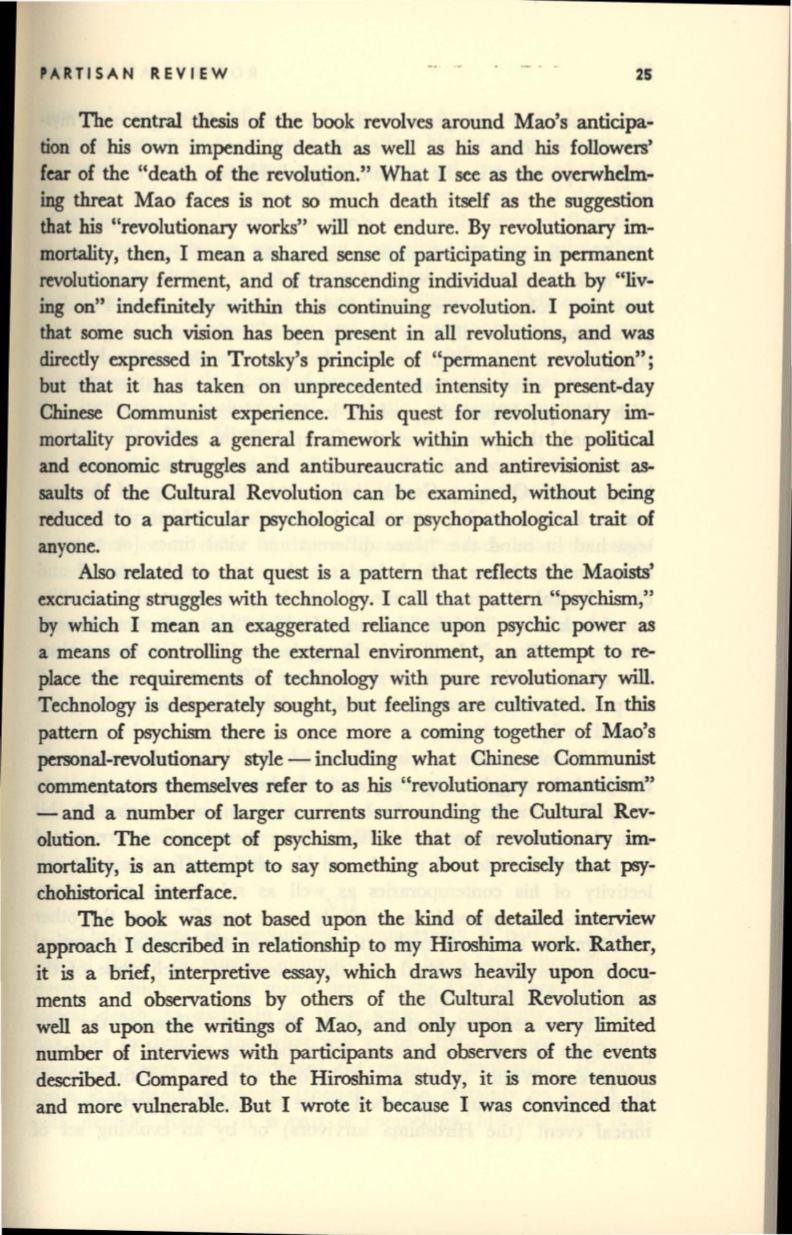
~ARTISAN
REVIEW
25
The central thesis of the book revolves around Mao's anticipa–
tion of
his
own impending death as well as
his
and
his
followers'
fear of the "death of the revolution." What I see as the overwhelm–
ing
threat Mao faces
is
not so much death itself as the suggestion
that his "revolutionary works" will not endure. By revolutionary im–
mortality, then, I mean a shared sense of participating in permanent
revolutionary ferment, and of transcending individual death by "liv–
ing on" indennitely within this continuing revolution. I point out
that some such vision has been present in
all
revolutions, and was
directly expressed in Trotsky's principle of "permanent revolution";
but that it has taken on unprecedented intensity in present-day
Chinese Communist experience. This quest for revolutionary im–
mortality provides a general framework within which the political
and economic struggles and antibureaucratic and antirevisionist
as–
saults of the Cultural Revolution can be examined, without being
reduced to a particular psychological or psychopathological trait of
anyone.
Also
related to that quest is a pattern that reflects the Maoists'
excruciating struggles with technology. I call that pattern "psychism,"
by which I mean an exaggerated reliance upon psychic power as
a means of controlling the external environment, an attempt to re–
place the requirements of technology with pure revolutionary
will.
Technology
is
desperately sought, but feelings are cultivated. In
this
pattern of
psychism
there is once more a coming together of Mao's
personal-revolutionary style - including what Chinese Communist
commentators themselves refer to as
his
"revolutionary romanticism"
- and a number of larger currents surrounding the Cultural Rev–
olution. The concept of psychism, like that of revolutionary im–
mortality,
is
an attempt to say something about precisely that
psy–
chohistorical interlace.
The book was not based upon the kind of detailed interview
approach I described in relationship to my Hiroshima work. Rather,
it
is
a brief, interpretive essay, which draws heavily upon docu–
ments and observations by others of the Cultural Revolution as
well as upon the writings of Mao, and only upon a very limited
number of interviews with participants and observers of the events
described. Compared to the Hiroshima study, it
is
more tenuous
and more vulnerable. But I wrote it because I was convinced that


